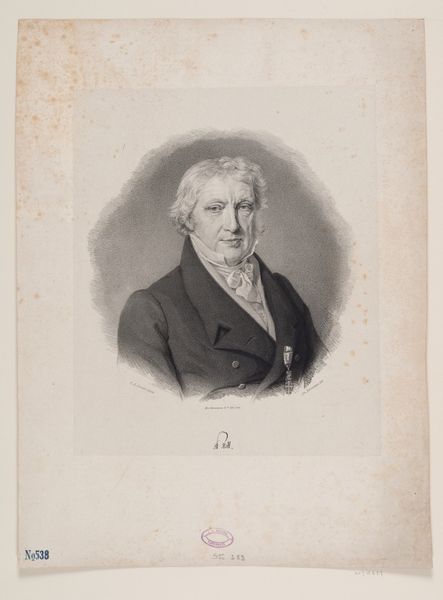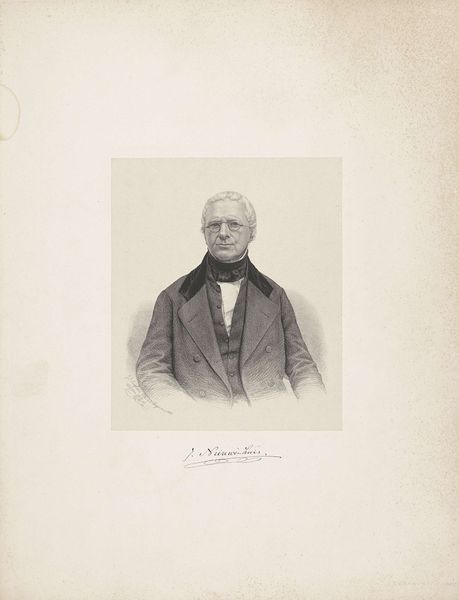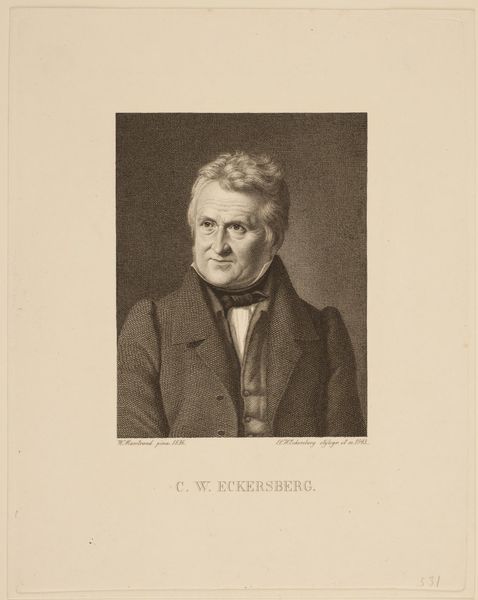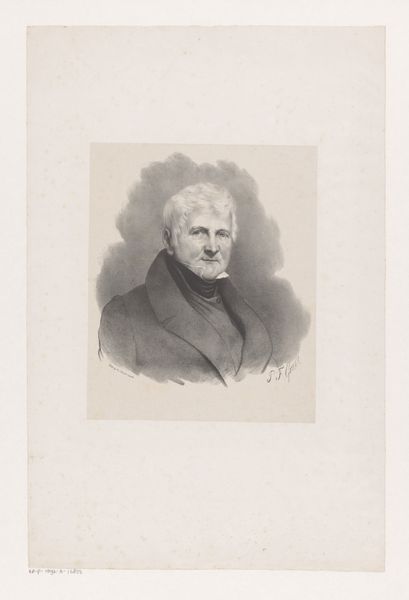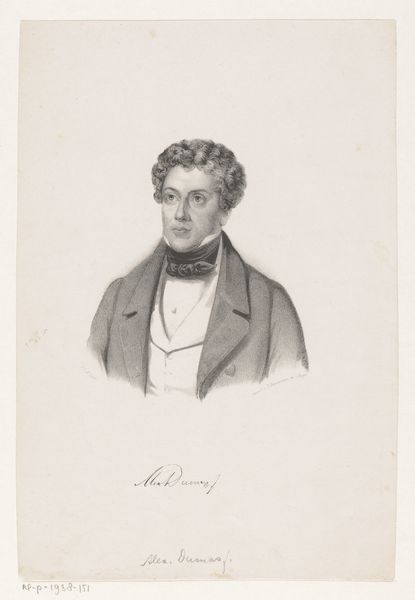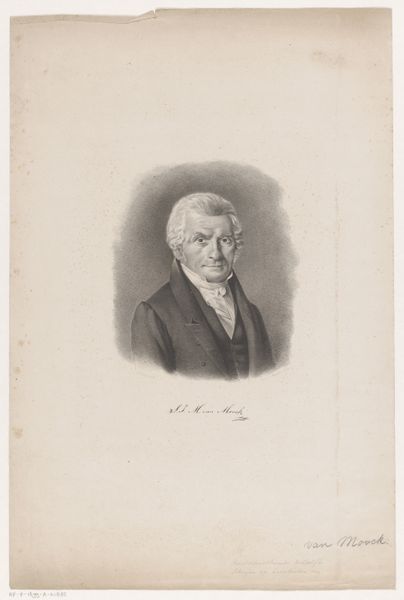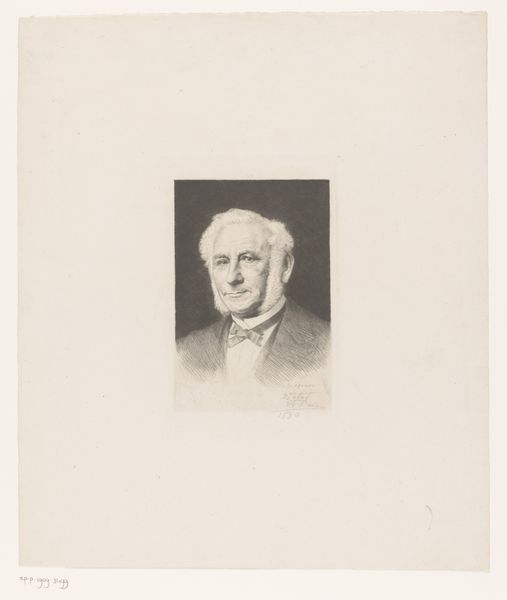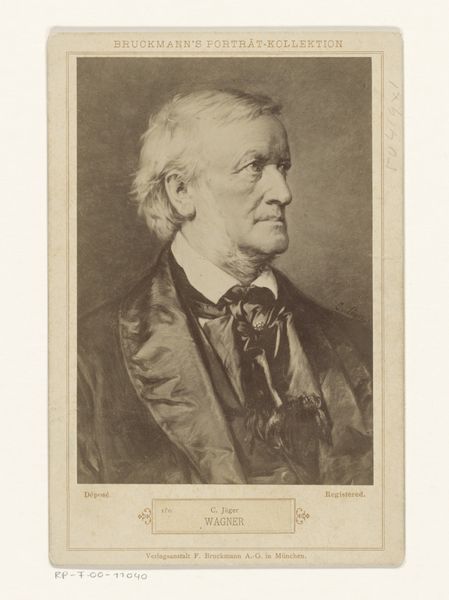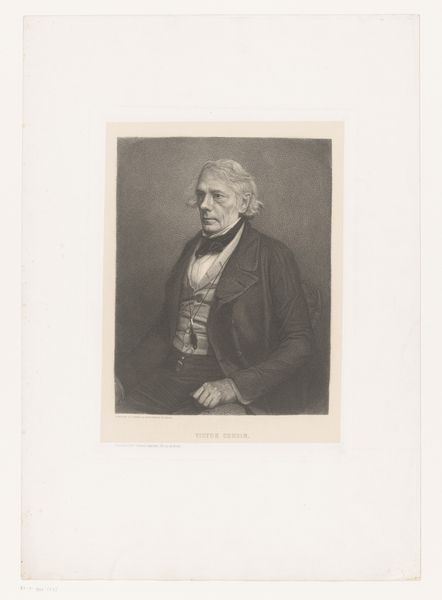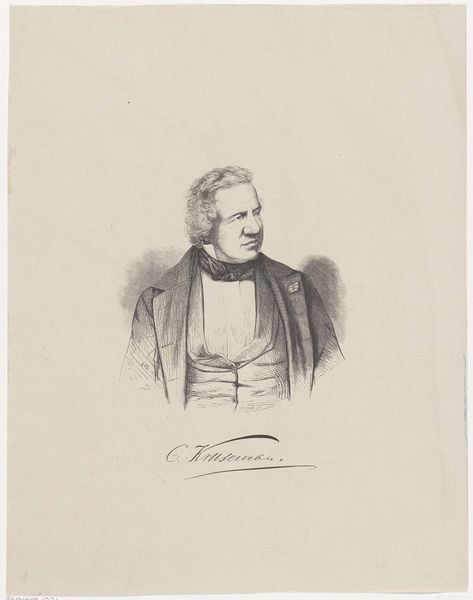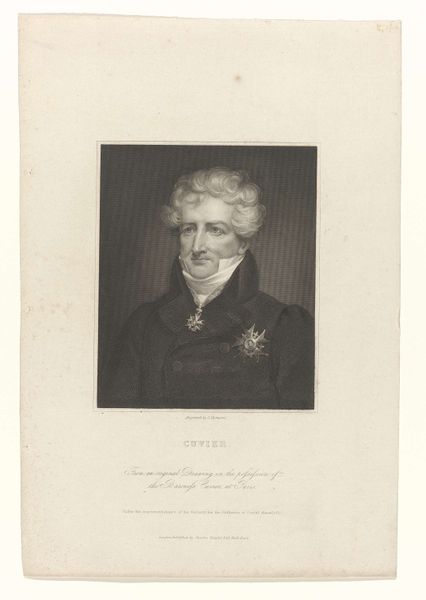
print, engraving
# print
#
charcoal drawing
#
academic-art
#
engraving
#
realism
Dimensions: 167 mm (height) x 144 mm (width) (bladmaal)
Curator: Welcome. We’re standing before an engraving by C.W. Eckersberg, created in 1843. The subject is believed to be Erling Eckersberg. Editor: It’s quite striking. I’m immediately drawn to the intricate lines—they almost vibrate off the surface. There's a tactile quality to the shadows, a certain weightiness despite being a print. Curator: Precisely. Notice how the sharp, deliberate lines sculpt form from the stark contrast of light and dark. The linear precision creates depth, capturing the sitter's likeness. Semiotically, the play of light across the figure can symbolize Enlightenment ideals, rationalism tempered with humanism. Editor: But also consider the process itself. Engraving requires intense labor—etching each line, building tone painstakingly. This speaks to a dedicated craft. The quality of the paper matters, too. Its likely rag content means it has more strength, speaking to both cost and the permanence afforded the work. The resulting multiples facilitated dissemination and broadened the audience beyond the art market’s elites. Curator: Agreed, the material factors inform reception, though focusing primarily on reception moves us away from the pure aesthetic experience. Take the gentleman's gaze, for instance; his eye is directed out towards us, not away. How do you read that choice? Editor: It makes me consider accessibility, the democractization of art through printed reproduction. He seems affable, but still retains his formality as an educated professional of his time. Consider also the culture of portraiture at that time—what would his peers have expected? An intimate depiction could invite accusations of impropriety. Curator: A fair assessment. But it is also the balance, the compositional structure of the face offset ever so subtly within its frame. He appears both worldly, yet framed almost delicately as if not to lose focus. Editor: The materiality is the very tool that communicates those signifiers to a potentially broad audience. What would this person represent and stand for? Engraving can then be viewed as its own sort of language in that sense—disseminating this symbol of virtue. Curator: Indeed, a symbol captured exquisitely in the contrasting textures and calculated lines. Thank you for elucidating the many meanings we’ve both gained here. Editor: And thank you for taking this opportunity to focus our attention.
Comments
No comments
Be the first to comment and join the conversation on the ultimate creative platform.
